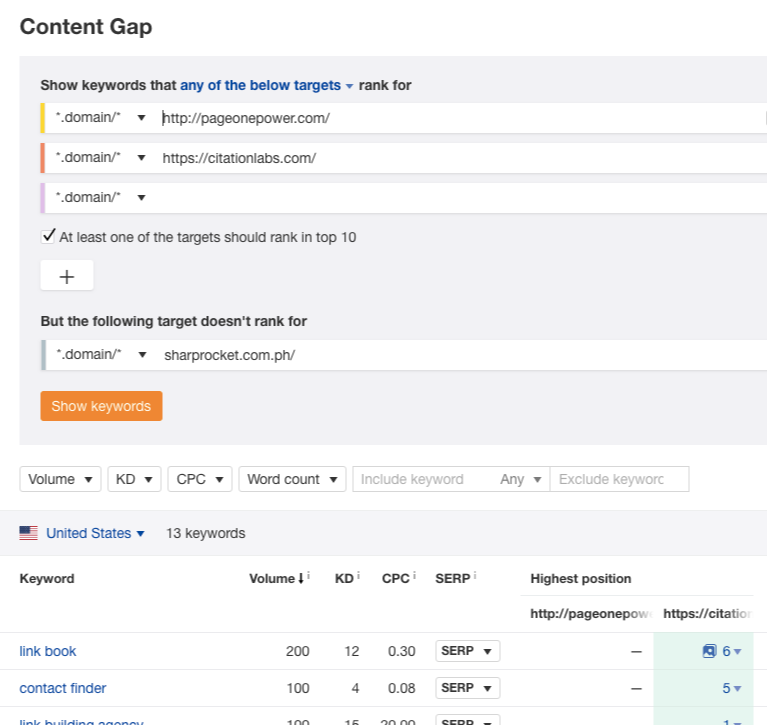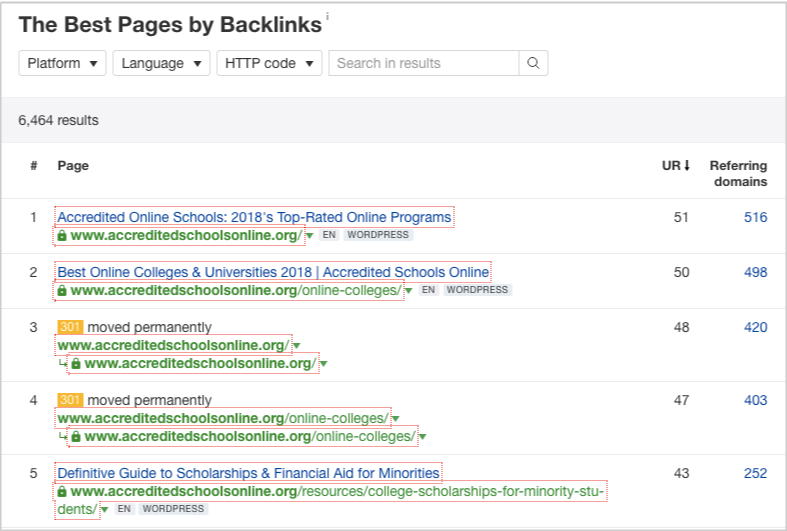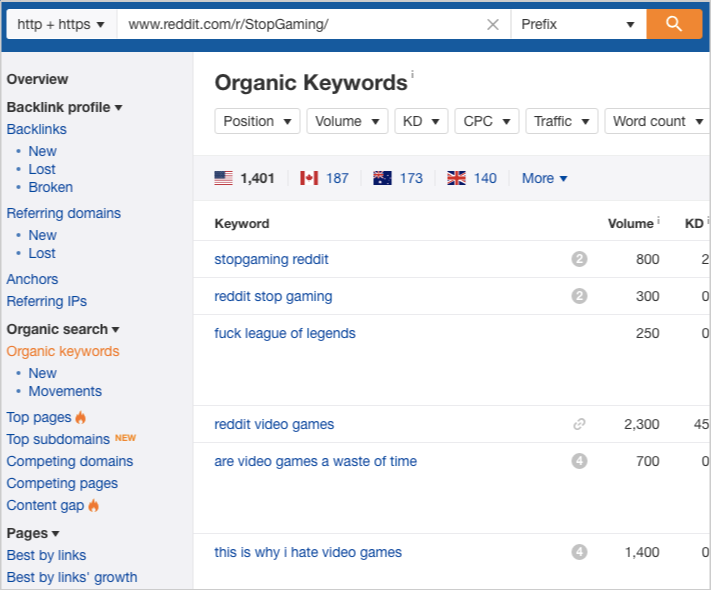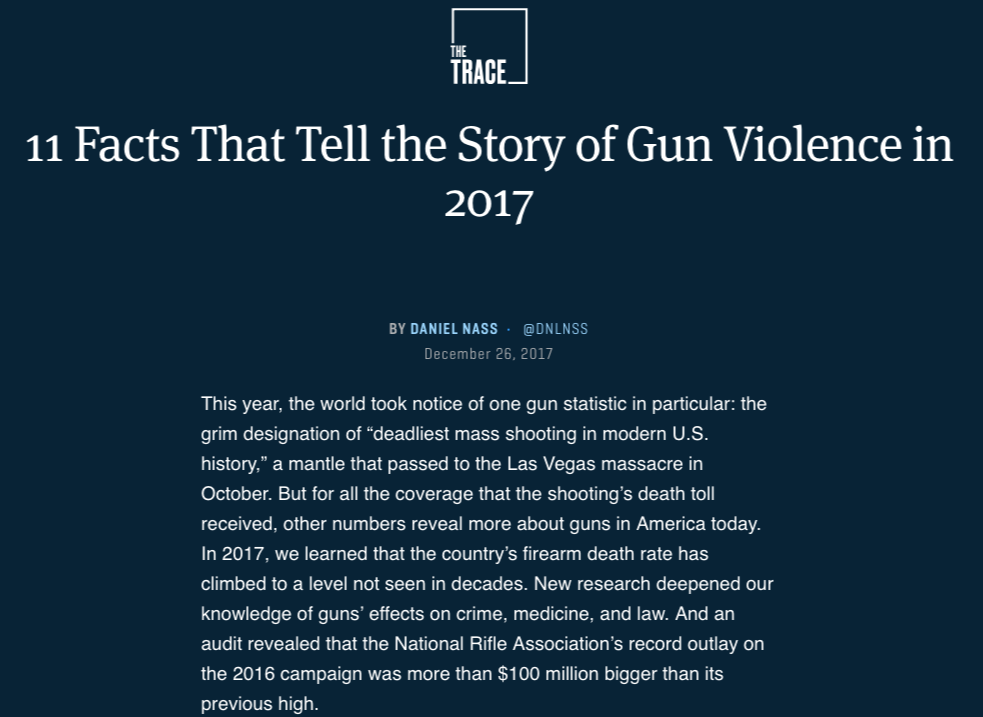by Venchito Tampon Jr | Last Updated on June 28, 2023
What is content gap analysis?
Content gap analysis is strategically understanding the needs of a targeted audience by looking at untapped content opportunities on competitors’ website, in industry’s content as a whole, and in several micro-niche communities.
There are many benefits to initiating a content gap analysis in your content marketing campaign. Let me give a few.
- Examine overlaps in your content topics with your competitors
- Discover new content opportunities your direct competitors haven’t grabbed yet (where you can fill in the gap)
- Identify content formats your unique industry majorly consumes
In the latest post of Rand Fishkin at Sparktoro, he examines the current blogosphere and if there’s still room for companies and other entities to leverage blogging in their online marketing strategy.
Regarding visibility, content formatting, and authority, not all brands can benefit much from blogging. Out of thousands of people who blog, a few only exist and do well.
Understanding that reality allows you to seek out topical opportunities driven by demands (needs) but with less content supply.
To start with content gap analysis, you can execute the most conventional approach: finding content gaps by plugging in competitors’ domains in a content marketing tool.
With Ahrefs’ Content Gap feature, you can discover keywords your competitors have ranked for but your brand hasn’t yet targeted.

To get the most out of the results, it is best to include websites you’re directly competing with from the highest relevance level. Go very specific with your competitor targeting.
Filter down keywords based on keyword difficulty level, search volume, and relevance. Create content assets that best suit your content marketing resources.
This is the most common way of doing content gap analysis, but there are three more methodologies I’d like to cover in this post.
How to Do Content Gap Analysis
Let me start with link-based audience overlap.
Link-Based Audience Overlap
One leading indicator of a growth-wise content marketing campaign is the number of links generated to a content asset. Though it’s not the primary defining value of a successful campaign, it helps create expectations from a quantity perspective.
Knowing this, you must also see if the preferred topics have a probability of driving links to a page/site.
The 601 audiences spreadsheet from Citation Labs is not only a good list of potential linkable audiences to tap into in your content but also a good assessment tool if any audiences haven’t been reached by your competitors through content.
Visit their resources section, or if the blog has massive content pieces, you can use Ahrefs’ Top Pages or Best By Links feature to see their most-linked pages quickly.

Check the 601 Audience spreadsheet alongside your competitors’ resource pages. It is best to curate all resource pages of your competitors in one place so you don’t have to switch to different tabs/sheets.
List down linkable audiences untargeted by your competitors. Check using any of these search queries to see if resource page link opportunities exist for that audience.
- intitle:links OR inurl:links “keyword”
- intitle:resources OR inurl:resources “keyword”
- inurl:links.html “keyword”
- inurl:links.htm “keyword”
- “links to resources” “keyword”
- “of links for” “keyword”
- intitle:”helpful links” “keyword”
- intitle:links “keyword”
- “other helpful links” “keyword”
- “links to websites” “keyword”
By considering not only keywords per se but the linkability potential of topics, you’re better of hitting a good leading indicator – the highest links possibly generated for the page.
Micro-niche Communities (Gaps in the Industry)
You may find industry content gaps in platforms where your targeted people mostly engage. These include micro-niche communities where some blogs originated, given that they see a significant need for information in the market.
Subreddits are a popular example of a micro-niche community. Examples of targeted subreddits are Woodworking and StopGaming.
Given that the information is strictly on the most relevant topic, you would often find questions that are too deep and technical. Those questions will likely have a search volume that demands some content attention.
You can leverage these subreddits to pinpoint technical and niche-oriented keywords and questions by engaging in the community or plugging your subreddit into a link analysis tool.

Another good approach is to create a singular page for the topic you’ve discovered. See if there’s a gap other content creators haven’t filled in yet. With the advanced search operator, “intitle:keyphrase”, you can check if the topic is highly saturated with informational pieces.

Pre-content Creation Link Jacking
One of the gaps every link-oriented content marketer has to fill is outdated content opportunities.
If a page has been linked to an outdated study, statistics, or article, it will be better off linked to a newly referenced content piece.
This may be overlooked by content creators and, more often than not, neglected by bloggers unless they do regular content audits of their websites.
It is a gap you can fill in right away.
If you have published interesting statistics, you can find earlier ones and articles with outdated statistics.

Find them and see the sites that are linked to them. Reach out to those sites and ask them to update their links to your new study.

Improving Your Content and Other Creators’ Content
As soon as you update your content piece with new, relevant information and other content formats to make it comprehensive and unique for an intended audience, you’ll find ways to fill in the gaps of other content creators. You meet a need in your market by providing them with new content assets to reference or by crafting content for a certain linkable audience untapped by your competitors.
Content Gap Analysis Frequently Asked Questions
What is an example of a content gap analysis?
One example of a content gap analysis is when you focus solely on creating decision-stage content without considering the other stages of your buyer’s journey, resulting in a gap. This can manifest as missing content for your personas’ buyer journeys or failing to cover keywords that your competitors are ranking for.
What are the three 3 fundamental components of a gap analysis?
The three essential components of a gap analysis include the current state, desired state, and the gap that exists between them. These components form the foundation for identifying areas of improvement and charting a course toward achieving organizational goals. A thorough analysis of these components helps businesses bridge the gap and improve performance.
What is the difference between keyword gap and content gap?
The main difference between keyword gap and content gap analysis is that keyword gap analysis focuses on identifying opportunities to improve overall search visibility, while content gap analysis identifies keywords you currently do not rank for. Keyword gap analysis looks at a broader scope, while content gap analysis is more specific to your existing keyword strategy and rankings.
The Author
Venchito Tampon Jr
Venchito Tampon is a Filipino Motivational Speaker, Corporate Trainer, and a Leadership Speaker in the Philippines. He is the CEO and Co-Founder of SharpRocket, a link building agency. With a decade of experience, Venchito has a proven track record of leading hundreds of successful SEO (link builidng) campaigns across competitive industries like finance, B2B, legal, and SaaS. His expert advice as a link building expert has been featured in renowned publications such as Semrush, Ahrefs, Huffington Post and Forbes. He is also an international SEO spoken and has delivered talks in SEO Zraz, Asia Pacific Affiliate Summit in Singapore, and Search Marketing Summit in Sydney, Australia. Check out his other businesses, Hills & Valleys Cafe, Blend N Sips and Saas Pursuit.
How our LINK BUILDING AGENCY builds 250 links/mo consistently using Predictable Link Building Methodology™…
- Using a SIMPLE and PROVEN system
- Using a SCALABLE strategy
- No private blog networks
- No creepy outreach emails
